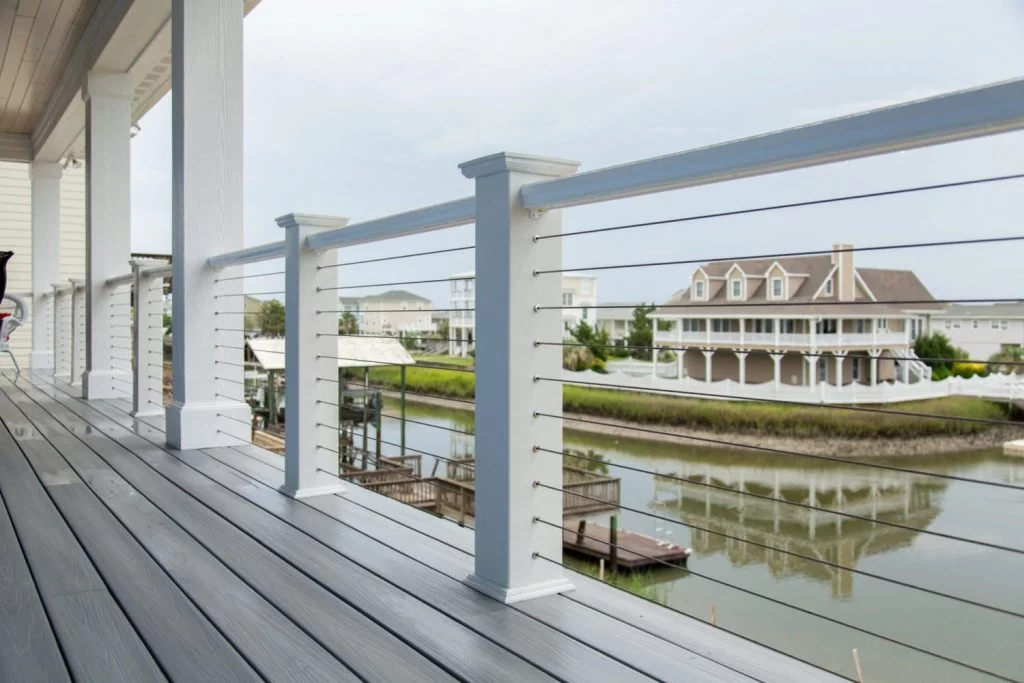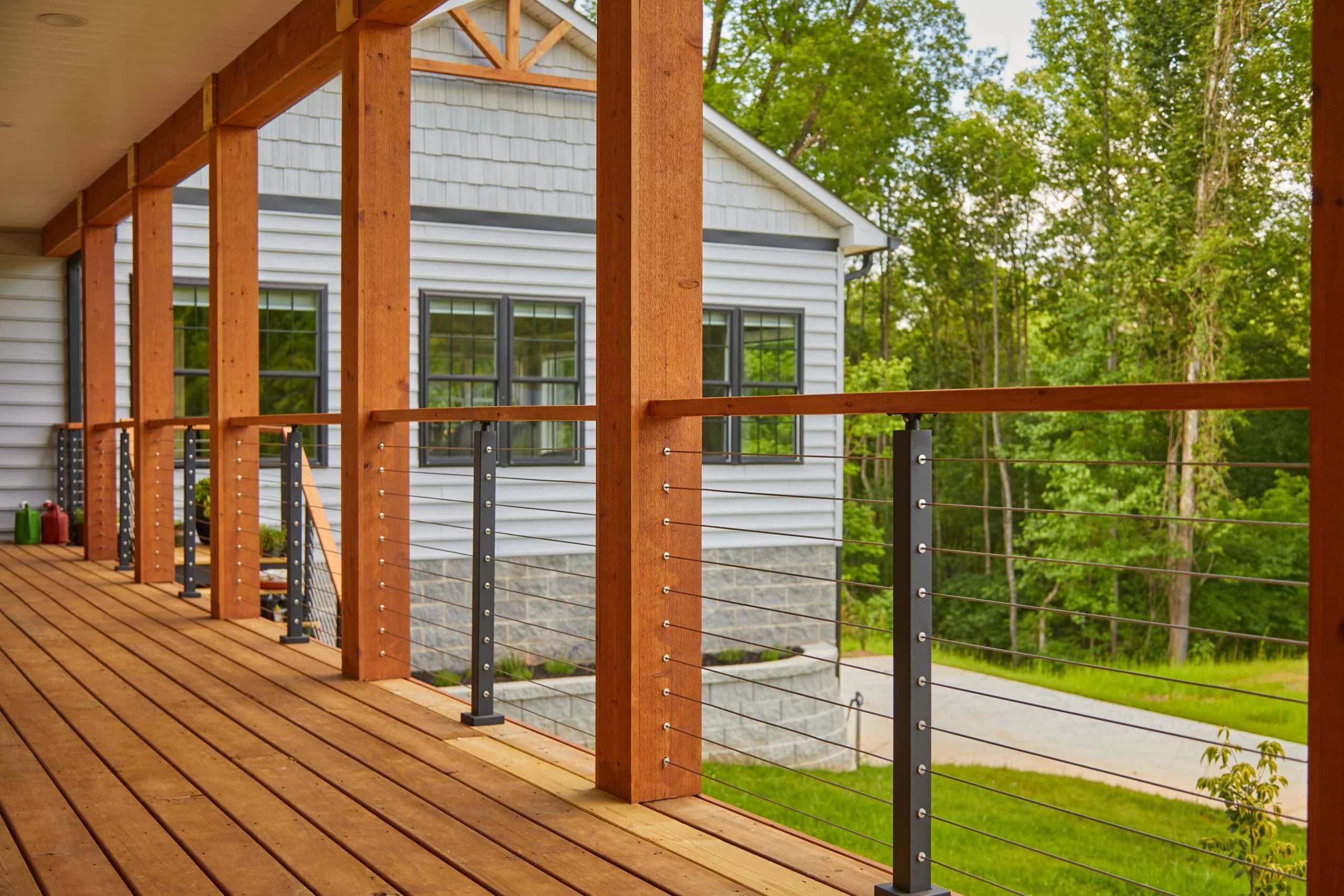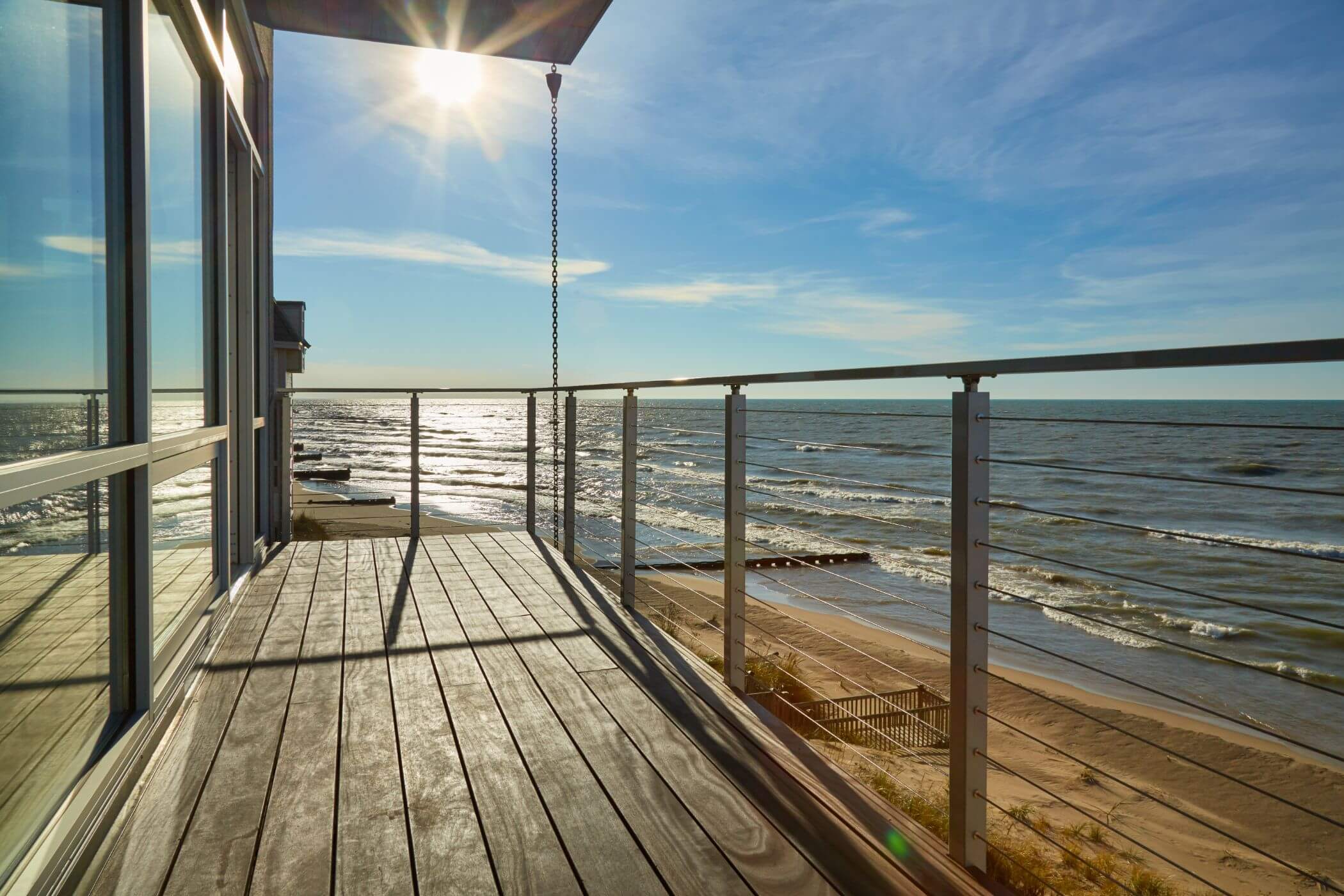
When it comes to post types, there are generally two materials that go head to head – wood vs metal posts. Let’s take a look at the benefits and differences between both materials to figure out which is best for you and your project. These factors include price, durability, style, and installation.
Price
Generally, wood material will always be cheaper than metal, because it takes less time to manufacture, cut, and style wooden posts. However, this material is highly susceptible to rot and decay if maintained poorly. The time and expenses that go into maintenance for wooden posts can add up – especially if you live in a coastal environment.
Metal posts are often on the higher price end. Because of the high-quality materials used – like stainless steel, aluminum, and more – there are fewer maintenance costs and requirements over time.
Typically, a wood railing system will cost between $75-95 per linear foot, whereas an aluminum system will cost $150 – $240 per linear foot, and a stainless steel system will cost $215 – $285 per linear foot.
Durability
When it comes to durability, there are a couple of factors to consider for wood posts. First, the cable wires may need to be re-tensioned more often in order to hold its safe construction, since wood posts flex more than metal. Second, weather conditions play a major role in the longevity of the post.
However, depending on the wood type you choose, some are able to withstand these conditions better than others.
For an all-around option, Metal posts are able to withstand more intense weather conditions and still maintain their durability. If you are looking for the ultimate defense against your environment, metal posts offer the best solution.
Style
Aesthetics and style play a huge role in the overall vibe of your space. Your railing system should help add to the vibe no matter what it might be. The style you want is up to you – both wood and metal are able to complement various aesthetics.
Wood posts are most likely to be found in more traditional spaces – they help complete the classic look of a railing system, while adding another texture or color.
 Featured Gallery: Wood Cable Railing Kits for a Wrap Around Porch
Featured Gallery: Wood Cable Railing Kits for a Wrap Around Porch
Metal posts can mostly be found in modern, minimalist spaces. With their sleek look, you can pair almost anything to help elevate your space.
 Featured Gallery: Deck Cable Railing at Silver Beach
Featured Gallery: Deck Cable Railing at Silver Beach
Size and Material
The wood type you choose can heavily influence the style and longevity of your system. For those who want a more classic style, wood can be a great option.
Metal posts come in two different material options – stainless steel or aluminum. Both offer style, durability, and strength in various environments. However, if you are looking for something to withstand high levels of salty air and water, stainless steel is the best choice. (Related Article: Aluminum vs Stainless Steel)
Installation
Pre-existing wood posts are perfect for an easy cable railing installation. If your posts are up to code, the next step is to run the wire cable through drilled holes and tension tightly.
Metal posts come predrilled depending on your specifications. Once the posts arrive, mounting and wiring the cable through the posts can be done easily. Both wood and metal materials offer the perfect option for beginner and intermediate DIY-ers.
Contact our team at Viewrail for more information on wood vs metal posts, materials, and more.